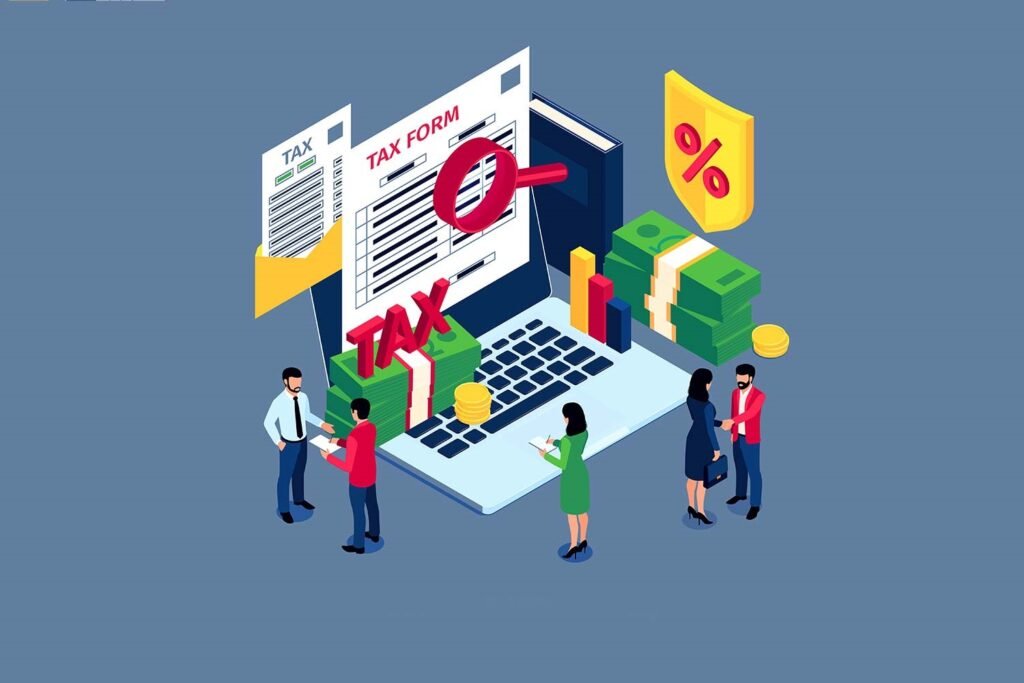Are you tired of watching your investment returns decrease due to huge tax bills? Imagine a portfolio that not only grows but also maximizes your after-tax returns. Welcome to the world of tax-efficient portfolio management strategies.
In this article, we’ll explore innovative approaches that experienced investors use to minimize tax liabilities while optimizing their portfolios. Discover how strategic asset allocation, tax-loss harvesting and smart withdrawal strategies can transform your investment outcomes.
Don’t let taxes destroy your hard-earned gains and learn how to keep more earnings and achieve financial goals faster. Dive in and take control of your financial future now!
Understanding Tax-Efficient Portfolio Management
Tax-efficient portfolio management aims to minimize your tax liability while it maximizes investment gains. You can reduce the tax impact on your portfolio’s performance by strategically managing and organizing your investments
Using tax-efficient strategies allow you to keep more of your returns and grow your money over time. Taxes can significantly reduce investment profits, so it’s very important to consider the tax results of your investing choices.
Effective tax-efficient portfolio management allows you :
- Achieve financial goals quicker
- Increase after-tax returns
- Decrease tax drag on investment performance
- Save capital for long-term increase
- Promote overall portfolio productivity
- More effectively get wealth
- Improve risk-adjusted returns
- Flexibly manage capital gains and income
Key Strategies for Tax-Efficient Investing

Utilizing tax-efficient investing strategies is very important to optimize portfolio performance. Let’s explore some key approaches:
Asset Placement
Keep tax-inefficient investments in tax-advantaged accounts while hold tax-efficient investments in taxable accounts.
For example, high-yield bonds often work better in tax-deferred accounts while low-turnover index funds suit taxable accounts. When deciding optimal placement factors in the tax qualities of different assets allocation.
Tax-Loss Harvesting
This strategy involves selling losing investments to counter capital gains and reduce your tax liability. You can possibly improve after-tax returns by carefully timing the sale of positions down in value and reinvesting the money.
However, when using this approach be aware of tax considerations and wash sale guidelines.
Utilizing Tax-Advantaged Accounts
Increase your contributions to Roth IRAs, 401(k)s, IRAs and other tax-advantaged accounts. These accounts provide different tax advantages that can significantly affect your long-term wealth growth.
Traditional retirement accounts provide tax-deferred expansion while Roth accounts give tax-free withdrawals in retirement. Consider approaches such as backdoor Roth and Roth conversions to optimize tax efficiency on the basis of your future expectations and personal situations.
Investment Selection

Select tax-efficient investment tools to minimize your tax liability. Index funds and ETFs usually outperform actively managed funds tax-wise because of passive management and lower turnover. These investments typically generate fewer capital gains distributions and lower your tax liability.
However, don’t focus only on tax efficiency when selecting investments. Consider your complete strategy and remember that active funds can still have a place in your portfolio if they offer unique opportunities or are according to your investment goals.
Advanced tax-efficient portfolio management Techniques
Let’s explore advanced strategies to improve your portfolio’s tax efficiency, building on the basic approaches we’ve covered.
Tax-Aware Rebalancing
Tax-aware rebalancing lowers tax effects when adjusting your portfolio allocations. You can do this by:
- Putting new money into rebalance instead of selling current positions
- Considering ETFs or other tax-efficient vehicles for rebalancing
- Harvesting losses to cancel out gains from required sales
These ways help keep your target asset allocation while reducing tax triggers.
Charitable Giving Strategies
Charitable giving can be a powerful tool in your tax-efficient portfolio management toolkit. Consider these main strategies:
Donating Appreciated Investments
You may avoid capital gains taxes and get a deduction for the full market value by gifting appreciated investments to charity.
Utilizing Donor-Advised Funds

Donor-advised funds (DAFs) efficiently manage charitable giving. DAF contributions are tax-deductible for that year. These allow you to separate tax deduction timing from your actual charitable distributions.
Qualified Charitable Distributions from IRAs
If you’re 70 1⁄2 or older, qualified charitable distributions (QCDs) from IRAs can satisfy required minimum distributions (RMDs) while excluding the amount from your taxable income. This strategy can significantly lower adjusted gross income.
Tax-Efficient Withdrawal Strategies
It’s very important to use tax efficient withdrawal strategies to increase retirement income. Take into considerations these strategies:
Sequence Withdrawals
Carefully plan account withdrawal order to minimize total tax impact. Generally, tap taxable accounts first, tax-deferred and lastly tax-free such as Roth IRAs.
Managing Required Minimum Distributions (RMDs)
Proper RMD management is important for tax efficiency in retirement. You may consider taking payouts early in the year, changing traditional IRA money to Roth IRAs before RMDs start. You can also use qualified donations to meet RMD needs.
Roth Conversion Ladders

A Roth ladder includes steadily turning traditional IRA assets into Roth IRAs over time. This approach can assist with tax liability, possibly reduce future RMDs and make tax-free income sources for retirement.
Implementing Tax-efficient Portfolio Management
Effective implementation of tax-efficient strategies needs careful planning and execution.. Here’s how to approach it:
Working with Financial Professionals
Partnering with financial professionals who’re specialized in tax-efficient portfolio management can give major benefits. These experts provide personalized plans tailored to your unique investment situation and goals.
When selecting advisors, find ones with specific tax planning and investing knowledge. They can guide complex tax laws, find tax saving opportunities and make sure that your tax-efficient strategies are according to your overall investment objectives.
Monitoring and Adjusting Strategies
Regular monitoring of your portfolio and tax analysis are important to keep tax efficiency over time. This means:
- Judging the tax impact of investment choices
- Reviewing if current tax-efficient strategies work
- Finding new chances to optimize taxes
As tax laws and personal situations change, be ready to adapt approaches. You must stay updated on tax regulation changes and prepare to adjust methods to maintain best tax efficiency.
Challenges and Considerations

While implementing tax-efficient portfolio management strategies, you’ll face many challenges. These challenges involve:
Balancing Tax Efficiency with Overall Investment Goals
You need to balance tax efficiency with bigger investment goals. Sometimes, chasing tax savings might conflict with other goals like to maintain proper diversification or get desired returns .
Addressing Complex Tax Situations
Tax-efficient portfolio management can get more complicated in some cases. Here’s a quick overview of some challenging situations:
| Scenario | Complexity Factors |
| Multiple Income Sources | Coordinating various income streams and their tax implications |
| International Investments | Navigating foreign tax credits and reporting requirements |
| Business Ownership | Managing the interplay between personal and business tax situations |
| Estate Planning | Integrating tax-efficient strategies with legacy goals |
Staying Informed About Tax Law Changes
Tax laws frequently change, so investors must stay informed. Regularly review tax regulation updates and talk to tax professionals to make sure that your plans stay compliant and effective.
Role of Professional Management

The role of professional management is very important for tax efficient portfolio management strategies. Professional management helps in various ways. It:
- Provides expertise on complex tax laws
- Offers personalized strategies on the basis of individual situations
- Helps find tax savings opportunities
- Ensures tax efficiency aligns with investment goals
- Assists with tax law and personal changes
- Monitors and adjusts plans over time
- Works with other financial experts for full planning
Challenges and Considerations
Using tax-efficient portfolio strategies has many challenges. Balancing tax efficiency with investment goals requires the most tax-efficient strategy may not match investor risk tolerance or return needs.
Keeping pace with changing tax laws is challenging and it needs constant adaptation and vigilance.
Complex tax situations can arise that need specialized skills. Tax and financial experts can help navigate issues, so tax-efficient strategies stay effective and compliant over time.
Conclusion
Tax-efficient portfolio management is a powerful tool to get long-term financial goals and increase after-tax returns. By using strategies such as tax-loss harvesting. asset location and tax-advantaged accounts, investors can greatly reduce their tax liability and improve overall portfolio performance.
Regular reviewing and adapting these strategies is very important to maintain tax efficiency over time. As you look at using these tax-efficient strategies, also consider to protect your investments. To learn about safeguarding your portfolio, read our post on using stop losses to protect your portfolio .


